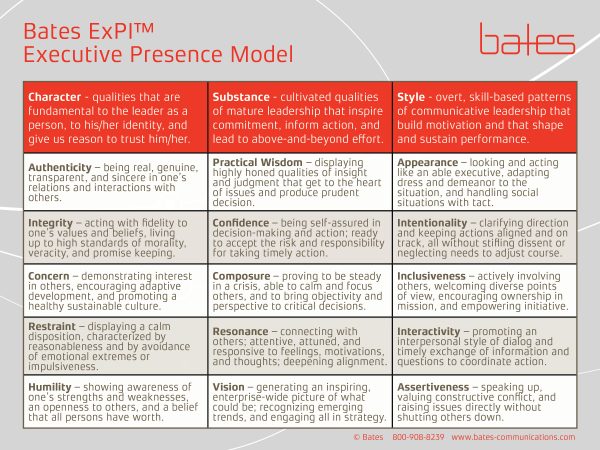 By Aimee Hansen
By Aimee Hansen
We are increasingly conveying a new message to our daughters and nieces when it comes to girls’ and women’s place in STEM (science, technology, engineering, mathematics): You belong.
“Ada Twist, Scientist” by Andrea Beaty held the top spot on the NYT best sellers among children’s picture books for four weeks as of October 16th (still in the top 10), joining Beaty’s “Rosie Revere, Engineer,” on the list for 76 weeks now.
In August, “Ada’s Ideas: The Story of the Ada Lovelace, the World’s First Computer Programmer” by Fiona Robinson was released. More of the books we give to our children to read are saying, STEM “is for girls” – and not only that, but they are exploring themes like passion, perseverance, and the value of failure.
Ada matters, and so does recognizing all the forgotten or overshadowed women in STEM, because it’s not that women are just entering these fields now, thank you very much. It’s that girls and women are being desperately courted back into them.
A Broken STEM Narrative
In an episode entitled, “When Women Stopped Coding,” NPR noted that women were a pioneering, rising presence in computer science until a stark turning point in 1984: when computers came into homes and the cultural narrative began glorifying them as toys for the boys.
From that year, the rising cultural narrative pushed girls out at home while talented women dropped out of tech in schools. In 1984, women represented 37% of computer science majors and despite the rising demand, today it’s 18%.
This was not the first time capable women were written out of the STEM story, just a recent one. The tired narrative that women don’t belong in STEM replays through the industry stereotypes and cultural dynamics that keep women away, throw an extra hurdle in their path, or drive them out.
Every time a new study (2016) shows that “woman” is still perceived by both men (even more so) and women to be incompatible with “successful scientist” (or programmer, or engineer, or executive, or leader), it’s proof that a limited narrative is still being internalized by our culture.
This “STEM is for men” narrative is dangerous, because it’s also written women right out of a rising proportion of high-reward, high-in-demand jobs. Bad for women, yes. And crippling for the U.S. economy.
Talent Shortage and Competitive Lag
A new report from Accenture entitled “Cracking the Gender Code: Get 3x More Women In Computing” calls the current lack of women a “national crisis with severe implications for America’s place in the global economy and for the future of women.”
Consider that women take home half of computing degrees in Malaysia and nearly half of engineering degrees in Indonesia. In the USA, women receive just 18% of computer science undergraduate degrees and 19% of engineering degrees.
The Accenture report states that job growth within the computer industry is growing at three times the national average, creating unmet demand. In 2015, there were over half a million open computing jobs in the U.S., but only 40,000 computer science graduates.
By 2018, it’s estimated that 2.4 million STEM jobs will be unfilled. The report points out that the shortfall of analysts in the U.S. is greater than the surplus of analysts in India and China combined. Increasingly these jobs are newly emerging jobs that haven’t existed before, requiring new specialized skills.
The glaring reality is that STEM needs women if the U.S. economy hopes to retain any leadership in digital innovation.
Women Sidelined Within Economy
An AAUW report states that engineering and computing represent 80% of the jobs in STEM, offering the highest return on investment and best job prospects.
Studies have shown that STEM jobs pay women better relatively to other jobs.
But women are least represented in engineering (13% of jobs) and computer science (26%), and the Accenture analysis showed that the gender pay gap within U.S. computing roles widened by 48% between 2011 and 2015, as women are missing out on the high-value roles.
Bringing women back into computer science isn’t just about progress in STEM. It’s about “bringing women back to the center of our economy.”
Encouraging Girls and Young Women In Tech
The Accenture report recommends a three-stage strategy to “more than triple the number of women working in computing in the U.S. to 3.9 million by 2025”, or 39% of the workforce. This would generate nearly $300 billion in additional cumulative earnings for women.
“The keys to improvement include: sparking the interest of girls in junior high school, sustaining their commitment in high school where early gains are often lost,” states the report, “and inspiring college undergraduates by reframing computer curriculums.”
Equal exposure is not enough, but actually re-tailoring educational programs towards girls, young women, and women – at all levels. Interventions at the college level would only result in 1.9 million in computing in 2025 (1.2 million now).
The first-ever technology and engineering literacy test in 2014 found that eighth grade girls (45%) were more proficient at engineering and technology related tasks than boys (42%).
A few years later, those same young women are less likely to take the related AP exams (only 20% of computer science exam takers) and less likely in their first college year to intend to major in these fields.
Accenture states that 69% of the potential growth in the computer pipeline is down to attracting girls at junior high age, as 74% of women in computing now were exposed in junior high.
This demands exposing girls to coding in more attractive ways (eg gaming), changing stereotypes, and increasing awareness of all parties (teachers, parents) about how computing can help change the world for the better.
Multiple initiatives here and globally are dedicated to recruiting girls and women into STEM- such as Million Women Mentors, the WISE campaign which seeks to bring one million women into STEM in the UK, and Girls Who Code.
At the high school level is when interest in computer science drops. The report recommends redesigning high school courses, creating grassroots campaigns around the difference STEM can make, and attracting more women teachers.
Supporting Women In Tech
At the college level, we’ve witnessed that strong, focused efforts can result in dramatic changes.
In 2016, Dartmouth graduated more female (54%) than male engineers, a first for a national research university. The program features more collaboration, a supportive network with diverse role models, and a “hands-on, project-based” approach, which exposes students to engineering who may not have chosen it.
In 2016, Harvey Mudd graduated a majority of women in computer science (54%) and physics (52%) for the first time ever, having already graduated a majority in engineering two years ago. Importantly, 64% of the 2016 computer science graduates who had accepted a full-time job had a position in the tech industry, compared to 30% in 2011. Only ten years ago, women were only 10% of computer science majors.
Under President Maria Klawe since 2006, Harvey Mudd has famously made three key changes that removed obstacles for women, such as reworking introductory courses to attract women and integrating research opportunities, and it only took a few years to quadruple CS majors and less than a decade to arrive to the landmark classes of 2014 and 2016.
At Harvey Mudd in 2017, six of the school’s seven department chairs and 38% of its professors will be women.
Biasing Recruitment towards Women
It’s not surprising that a slew of diversity apps designed to help to mitigate bias in hiring and promotion have been rising out of Silicon Valley, in many cases led by women who have faced bias in action in the tech industry.
These ideas help reduce the biases that keep women and minorities out of tech roles. But after such acute exclusion with such growing demand, it will take more than eliminating bias against women to address the massive talent gaps. It will take educational strategies that lean in towards girls and women.
Representation, visibility, and mentorship of women in these fields remains paramount. It starts to rewrite the broken cultural narrative and reminds both girls and women that we do belong – from our children’s books to our leadership.
Being visible is arguably the most influential thing an engineer, scientist, programmer, mathematician, and executive in any of these fields can do to encourage change.
Because it’s not just that girls and women belong. It’s that they are needed.
 By Nicki Gilmour, Executive Coach and Organizational Pyschologist
By Nicki Gilmour, Executive Coach and Organizational Pyschologist








